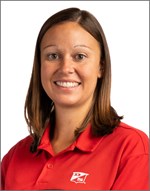Fall Fertility Refresher; Taking a Last Cut of Alfalfa; Recording Your 2021 Field Notes
BY Dairyland Seed Agronomy Team
PLANT NUTRITION AND SOIL FERTILITY
Sometimes it is good to rediscover the reasons why we do what we do in the field. The following definitions and topics are important to keep in mind as you develop and execute on your fertility plans this fall.
Important Soil Properties for Fertility
Soil pH: soil pH is king, influencing all other nutrients and biology in the soil. pH measures the acidity or alkalinity of soil. Acidic soils have a higher concentration of H+ ions; identified with lower pH, such as 5 or 6. Alkaline soils have a lower concentration of H+ ions and more OH- ions. Alkalinity is identified by a pH above 7 (7 being neutral). The pH scale is logarithmic, so a pH of 5 has a concentration of H+ that is 10x higher than a pH of 6. The target pH for most crops is near 6.0, with legumes being closer to 6.8-7.0.
Cation Exchange Capacity (CEC): Cations are positively charged ions in the soil. Exchangeable cations are those which easily move between soil particles and plant roots (both of which are negatively charged). Roots release CO2, which reacts with water to release a H+ cation into the soil. This H+ can bump another cation from a soil particle to be taken up by a plant. Ammonium (NH4+), potassium (K+), calcium (Ca++) and magnesium (Mg++) are almost exclusively used by plants in this way. CEC is the measure of cations that a soil can hold. Finer soil particles such as clays and organic matter have more negatively charged binding sites and therefore higher CECs than coarse soils.
Base Saturation: The amount of the total CEC that is occupied by base cations such as K+, Ca++ and Mg++. Base saturation can be measured for each cation and should be balanced appropriately.
Essential Elements for Plant Growth
Structural Nutrients: Carbon, Hydrogen and Oxygen from air and water and make up 95% of the plant.
Primary Nutrients:
- The Nitrogen cycle in the environment is very complex and warrants a lot of our attention as agronomists and producers. It is worth studying in-depth, but that is for another time. Nitrogen is available to plants as nitrate (NO3-) and ammonium (NH4+). It is a primary component of proteins in the plant, but is also important for enzymes and chlorophyl.
- Phosphorous is very immobile in the soil due to its ability to quickly react with iron, aluminum and manganese in acidic soils and calcium in alkaline soils. With good soil pH management, this immobile phosphorous acts as a ‘bank’ to constantly replenish plant-available phosphorous. Plants use phosphorous for cell division and transportation of energy, making it a key nutrient for growth, flowering, grain fill and water uptake.
- Potassium, an exchangeable cation, is needed for charge balance in plants. It is important for many metabolic processed and nutrient transfers. Potassium is key for improved disease resistance and stalk strength in crops.
Secondary Nutrients:
- Calcium is another exchangeable cation, important for cell structures and growth. Most soils have a large supply of calcium, so deficiencies are rare for most geographies of the Midwest.
- Magnesium is an exchangeable cation that serves as an enzyme activator and is a component of chlorophyl. Deficiencies are most common on sandy soils (low CEC) that have high amounts of potassium and ammonium inputs.
- Sulfur plays a key role in converting nitrate into organic nitrogen within the plant, hence the overall yellowing of sulfur deficient plants. Sulfur deficient crops also tend to accumulate nitrate for this reason. As high protein crops, legumes have an especially high need for sulfur.
Micronutrients:
Micronutrients can be managed on an as-needed basis after we see symptoms or build a history of known issues. A regular micronutrient program is not generally recommended. Focus on any corrections to soil pH as the first strategy. Boron is perhaps most important from a management standpoint. Needed for cell division and reproduction, boron deficiency can have a big impact relative to the amount that is needed. Zinc has multiple metabolic functions in the plant. Like boron, it too has a large impact relative to the quantity needed. Watch for zinc deficiency on sandy soils that have a pH higher than 6.5. Manganese is an important enzyme activator for photosynthesis. Its availability becomes so high to plants in acidic soils that it’s a big reason why we lime alfalfa crops to a pH of near 7.0. Iron deficiency is very rare with the exception of non-field crops and on very alkaline soils. Iron is important for the production of chlorophyl. Sometimes we hear about Molybdenum applications to legumes because of its importance to nitrogen fixation, but again we see this generally solved by proper liming. Rates are so low that only foliar applications are practical. Copper, Nickel and Chlorine are also essential nutrients for plant growth, but generally don’t need management other than to watch for toxicity.
CAN I CUT MY ALFALFA AFTER FROST?
A frequent question late in the growing season is whether taking an alfalfa cutting before or after receiving a frost is recommended. A concern I have as an Agronomist regarding taking one more cutting late in the season is whether this will draw down the plant’s carbohydrate reserve enough that it will affect winter survivability. As usual, the answer is, it depends.
If you are taking a cutting prior to your normal killing frost date, you will want to do so when you would normally accumulate 500 Growing Degree Days/Units (GDD or GDUs, GDUs are calculated by Maximum Daily Temperature + Minimum Daily Temperature / 2 - 41°F) or more. Accumulating 500 GDUs or more, allows the plant enough regrowth for good winter survival and yield for the next year.
If you are taking a cutting after a frost, leaf quality will go down the longer you wait to cut after the frost, so timing and the actual temperature come into play.
- A light frost (29 degrees or higher) will only kill the tops while the crown will keep growing and continue making fresh forage. You probably won’t sacrifice much quality after this occurrence. Leaf drop is the indicator here. If the forecast is cool enough for limited regrowth, it’s ok to cut, but waiting is also fine. I suggest that we wait for now, unless you happened to have the following:
- A heavy frost (27 degrees or lower for 2-4 hours) that ‘kills’ the crown will halt growth. Go harvest before you have too much leaf drop.
Potential watchouts or concerns that any late season cutting would be:
- Harvest at a higher height to reduce the risk of ice sheeting and crown suffocation while simultaneously supporting adequate snow cover.
- Harvest fields that have alfalfa varieties with better winter survivability scores.
- Fields with lower fertility in particular potassium (K), and sulfur (S) as well as pH decrease the likelihood of winter survivability and late season or frost cutting.
As always if you have questions about this or any other agronomy topic, contact you Dairyland Seed Regional Agronomist or District Sales Manager.
CREATING A FIELD OR FARM GOAL DOCUMENT
As our fall harvest has slowed down due to rain and wet fields in some areas, or is completed in others, now is the time to step back and review what happened in our fields in the past growing season, both good and bad, and things that we want to either keep or change.
My habit is to take a notebook (electronic versions work) and drive to the field to spark my memory to document what happened in the field this year, as well as previous growing seasons, that I need to be aware of to improve and prepare for next year and beyond. I have heard folks reference this as “Field or Farm Goal Document” which is quite an appropriate description.
Topics or items that I normally think about when reviewing this field or farm’s growing season:
- Hybrid or Variety: Which Dairyland Seed product performed best on this field? Is there another Dairyland Seed product that you want to try? Or is there one that you know will excel on that ground?
- Weed Control: Did your weed control plan live up to your expectations or do you have weeds that it missed? If so, do you recognize and know what weed it is? Or was it a timing issue when it was sprayed or worked, plugged nozzle or improper mixing? If you do not recognize or know what the weed is, contact your Dairyland District Sales Manager or Agronomist to help. We have seen an increase of Palmer Amaranth spreading into new areas, and we want to make sure we stop it where we can. Do you need more herbicide resistant traits like Dairyland Seed Enlist E3® soybeans? These soybeans will allow you more flexibility and freedom in timing when you want to safely spray your crop as well as the products you want to.
- Disease Pressure in Corn: Are you seeing heavier disease pressure this year versus previous years? Are you seeing new or different diseases starting to appear? We have seen near areas with Tar Spot move further east and west versus previous growing season. Physoderma Brown Spot and Stalk Rot, as well as Goss’s Wilt and Anthracnose have been prevalent in areas as well.
- Disease Pressure in Soybeans: Did you have new areas of Sudden Death Syndrome (SDS), Sclerotinia White Mold (SWM) Frogeye Leaf Spot (FLS) or have you seen them before? Do you need a different Dairyland Seed variety to help with these diseases or additional seed treatments or fungicide applications to help with control measures?
- Insects: Did you have corn that had heavy corn rootworm feeding pressure this year or did you have heavy beetle pressure? Do you need the additional protection of Qrome® insect protection, or soil applied insecticide? is this field a good field to rotate to a different crop for a year or two? In soybeans, are you seeing increased pressure from Soybean Cyst Nematode (SCN)? Do we need a seed treatment like ILeVO® that will help with control of SCN and its yield robbing nature?
- Fertility and pH: With the increased cost of fertilizer, do you need to haul manure farther to other fields to help reduce our costs? Or, do you have a neighbor that needs other fields to spread manure on? Now would be a great year take advantage other that opportunity. In areas that were very warm during the growing season and have not had too much rainfall, is there enough carryover Nitrogen that you could safely lower our Nitrogen application rate? Do you have fields that the soil pH as dropped on? By spreading lime, we not only raise the soil pH but by doing so over time, we increase the availability and efficiency of nutrients already in the field.
- Crop Rotation: Due to lack of availability or cost of fertility and/or Crop Protection Products (herbicides, fungicides, insecticides), would switching to a different crop help with this issue? Do we have a disease or insect concern that crop rotation would help alleviate?
- New Product, Equipment, Crop or cropping practice: How did that new thing you tried, perform this year? Did it provide a better Return on Investment (ROI)? Did it save you time, or make your life easier/less hectic? (Dairyland Seed Enlist E3® soybean yield and the herbicide flexibility come to mind when I think of this.)
Another item that I normally review during this time of year is what changes in a farm operation need to made due to “Life Events”. Do you need more time because you are having another child? Adding a son or daughter in law? Or taking a trip to your dream location? Make adjustments now to help your Life Events. .
JOIN THE DAIRYLAND SEED ELITE PRODUCER CLUB
You can be a member of Dairyland Seed’s Elite Producer Club by submitting photos or testimonials of high performing products! Simply test a picture or testimonial of your high performing products to 913-DS-YIELD or 913-379-4353. The program runs from August 15 through December 1, 2021.
Participants will receive a free Dairyland Seed t-shirt (one per entry) and “Elite Yield Club” Certificate. All corn grain, corn silage and soybean products are eligible.
Qualifying products for “Elite Yield” Contest (one winner per family, per region, prize is 3 free units of product that was entered):
Region 1 = DS-3366 family; DS-3550 family; DS-4018 family
Region 2 = DS-3550 family; DS-4018 family; DS-4878 family; DS-5144Q
Region 3 = DS-4310 family; DS-4878 family; DS-5144Q
Region 4 = DS-3366 family; DS-3550 family; DS-4014Q; DS-4310 family
Information required in text: Participant; Location; Product; Yield in Bushels or Tons; T-Shirt Size; DSM; Mailing address if different than participant.
2021 YIELDMASTER CONTEST
Fall harvest kicks off the annual Dairyland Seed Corn, Silage and Soybean Yieldmaster Contest. Take a moment to enter your outstanding yields and you just might be our 2021 winner!
Seed Credits for Winners
- The National Corn, Soybean and Silage Yieldmasters will each receive a $2500 seed credit.
- First Place Corn, Silage and Soybean winners from each zone receive a $1000 seed credit.
- Second Place Corn, Silage and Soybean winners from each zone receive a $500 seed credit.
Entries can be submitted online at www.dairylandseed.com or via your DSM who can submit your entry using the iPad app. Silage entries are due November 3, 2021. Corn and Soybean entries are due December 3, 2021.
 |
 |
 |
 |
 |
| Brian Weller Western Region 507.456.3034 |
Dan Ritter Central Region 219.863.0583 |
Branden Furseth Northern Region 608.513.4265 |
Mark Gibson Eastern Region 260.330.8968 |
Amanda Goffnett Eastern Region 989.400.3793 |
